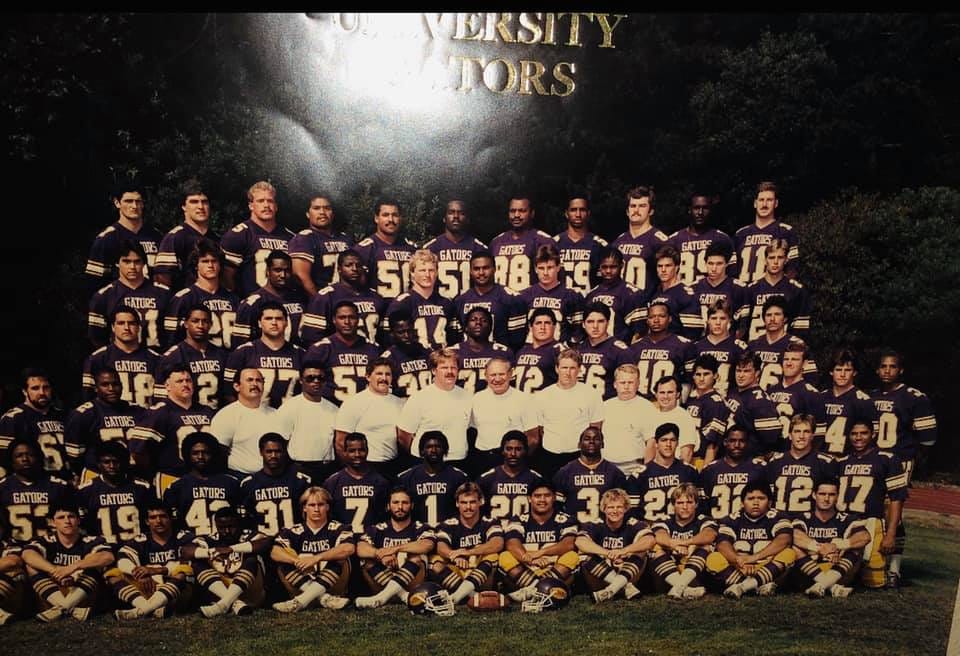Andy Reid and college football's forgotten Cradle of Coaches
Long before he led the Chiefs to three Super Bowl titles, Reid was a 20-something assistant at San Francisco State. He was far from the only one to get his start at the now-defunct program
Yet again, Andy Reid found himself on top of the football world when his Kansas City Chiefs beat the San Francisco 49ers 25-22 in overtime on Sunday to win Super Bowl LVIII, the third title in the past five years for a franchise that previously hadn’t been crowned a champion since six months after the moon landing.
Successful as he has been, Reid existed for years as a punchline, the portly, lumbering and mustached coach with occasionally poor clock management skills whose teams seemingly always found a way to come up painfully short of their goals.
With the victory Sunday, however, Reid continued to rewrite the story of his career, going from a coach who helped his team win a couple of Super Bowls to a man who now oversees a dynasty.
That two of those championships came against a team from San Francisco is fitting for Reid.
Though the vast majority of his life as a football coach has taken place at the professional level, Reid got his start in the college game. His first full-time, paid stint came in 1983 when he, at 25 years old and only a few years removed from his college graduation at BYU, started work as an offensive line coach at San Francisco State.
Reid was hardly the only notable coach to pass through the Gators’ program during its lifetime and during that specific stretch of time in which he called the Bay Area home. In fact, he wasn’t the only future Super Bowl-winning head coach to do so. For those men, San Francisco State wasn’t merely a gratuitous bullet point on their resume. It was a formative experience that made their future achievements and glory possible.
Within a decade of Reid leaving San Francisco State, however, the program closed its doors for good. It lives on today as a ghost, something with a known history and remnants of its existence scattered among those still living.
For each time Reid wins a big game or lifts a Lombardi Trophy with confetti raining down on him, there’s a reason to remember the story of the program that helped chart his path there.
How San Francisco State gave Reid and so many others their start
When a wide-eyed Reid arrived at San Francisco State in 1983, the school had fielded a football team for more than 50 years.
Though it lost each time – and by a combined score of 118-13, to boot – the program had appeared in three bowl games: the Fruit Bowl in 1948, the Pear Bowl in 1950 and the Camellia Bowl in 1967.
It wasn’t so much the program, though, that shaped Reid and those who passed through it in the era that he was there. It was the coach.
From 1961-89, San Francisco State football was under the careful watch of coach Vic Rowen. Before he found his life’s work in coaching, Rowen was a staff sergeant in the U.S. Army 101st Airborne during World War II. Though he wasn’t one for war stories, Rowen, who was Jewish, once told Reid that the reason he enlisted was to find Adolph Hitler.
“He was one of the toughest human beings I've ever been around,” Reid said. “He was tougher than shoe leather."
By 1967, he had led San Francisco State to its fifth Far Western Conference title, but more notably, he had implemented an innovative, high-powered offense. On his way to guiding the Gators to an undefeated regular season in 1967, quarterback Bob Toledo threw for 3,513 yards and 45 touchdowns while setting eight Division II records. Two of Toledo’s primary targets that season, Ed Larios and Joe Koontz, went on to play in the NFL, as did a number of other San Francisco State players during Rowen’s tenure – among them, Floyd Peters, Bill Baird, Charlie Fuller and Elmer Collett.
Beyond its individual pieces, it was Rowen’s scheme that drew acclaim. Though Bill Walsh is largely credited as the father of the West Coast offense, Rowen was running a productive version of it more than a decade before Walsh took over as Stanford’s head coach in 1977.
For all of its groundbreaking qualities, the Gators’ program began to weaken as the world immediately around it changed. In 1968, San Francisco State’s campus was impacted by a strike initiated by the Third World Liberation Front (TWLF), a coalition of various ethnic student groups that pushed back against Eurocentric education and lack of diversity at the university. It lasted for nearly five full months, making it the longest strike by students at an academic institution in the United States. It brought about much-needed change – including a College of Ethnic Studies and increased faculty diversity – but many accounts of San Francisco State’s football history marked it as a turning point for the program. On the heels of an undefeated regular season, the Gators went 5-5 and from there, things seldom got better.
By the time Reid was hired after the 1982 season, the program was struggling to get by.
Keep reading with a 7-day free trial
Subscribe to The Front Porch to keep reading this post and get 7 days of free access to the full post archives.





